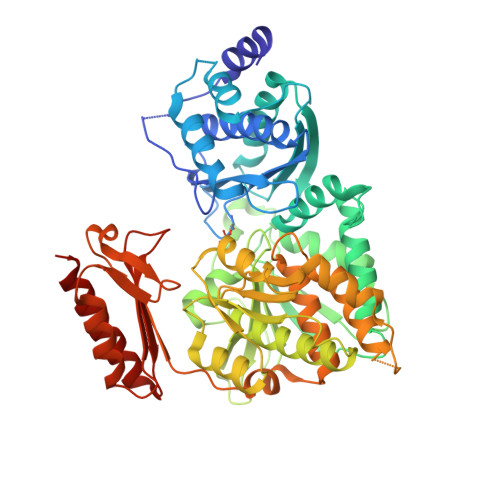Evidence for substrate-assisted catalysis inN-acetylphosphoglucosamine mutase.
Raimi, O.G., Hurtado-Guerrero, R., van Aalten, D.M.F.(2018) Biochem J 475: 2547-2557
- PubMed: 29967067
- DOI: https://doi.org/10.1042/BCJ20180172
- Primary Citation of Related Structures:
5O9X, 5OAW - PubMed Abstract:
N -acetylphosphoglucosamine mutase (AGM1) is a key component of the hexosamine biosynthetic pathway that produces UDP-GlcNAc, an essential precursor for a wide range of glycans in eukaryotes. AGM belongs to the ¦Á-d-phosphohexomutase metalloenzyme superfamily and catalyzes the interconversion of N -acetylglucosamine-6-phosphate (GlcNAc-6P) to N -acetylglucosamine-1-phosphate (GlcNAc-1P) through N -acetylglucosamine-1,6-bisphosphate (GlcNAc-1,6-bisP) as the catalytic intermediate. Although there is an understanding of the phosphoserine-dependent catalytic mechanism at enzymatic and structural level, the identity of the requisite catalytic base in AGM1/phosphoglucomutases is as yet unknown. Here, we present crystal structures of a Michaelis complex of AGM1 with GlcNAc-6P and Mg 2+ , and a complex of the inactive Ser69Ala mutant together with glucose-1,6-bisphosphate (Glc-1,6-bisP) that represents key snapshots along the reaction co-ordinate. Together with mutagenesis, these structures reveal that the phosphate group of the hexose-1,6-bisP intermediate may act as the catalytic base.
Organizational Affiliation:
Division of Gene Regulation and Expression, School of Life Sciences, University of Dundee, Dundee DD1 5EH, U.K.


















